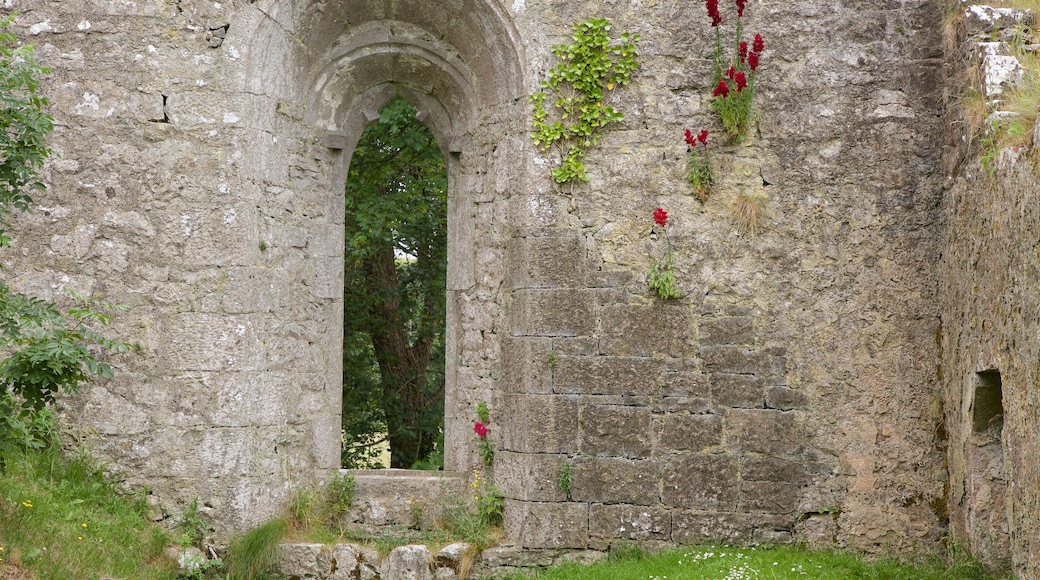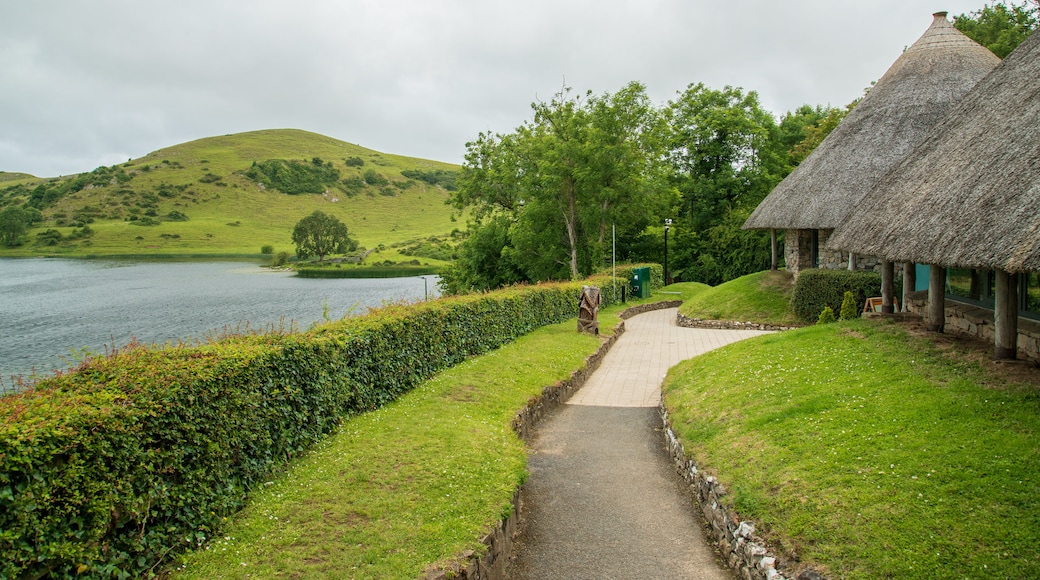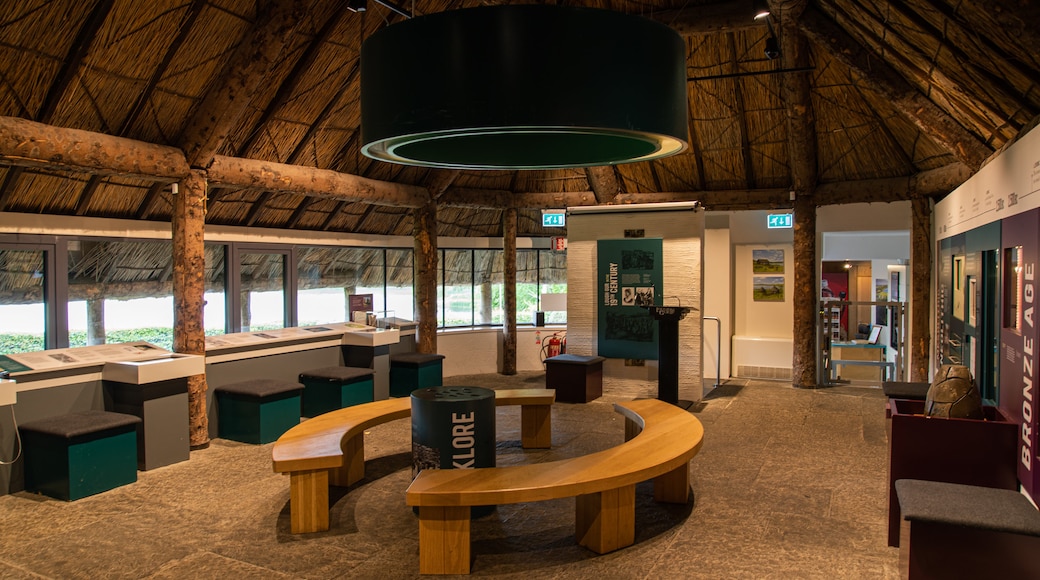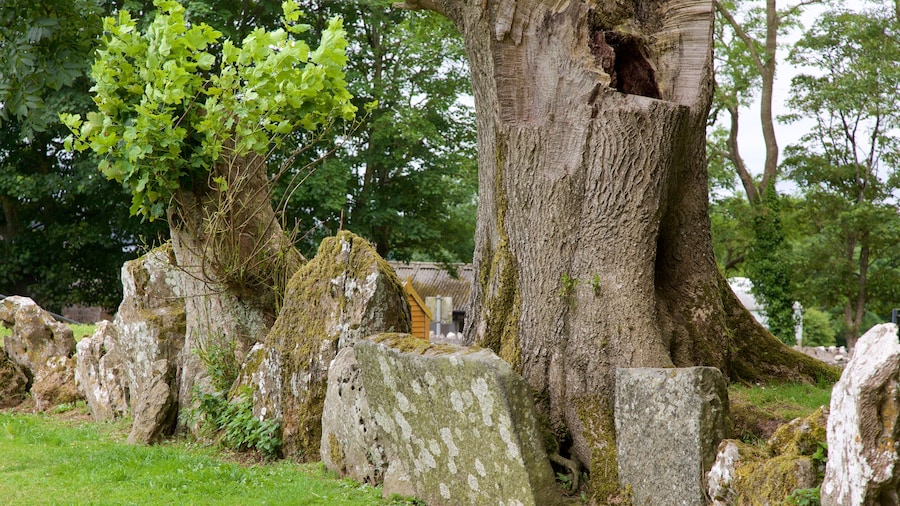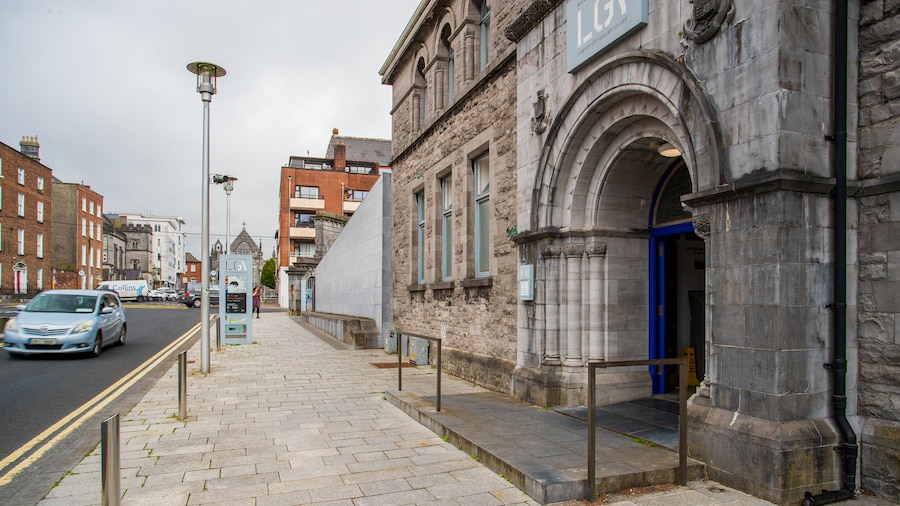Walk amid Stone Age history at the quaint lakeside of Lough Gur, a scenic pocket of history and archaeology in County Limerick. Humans have resided near this picturesque horseshoe-shaped lake at the base of Knockadoon Hill since approximately 4000 B.C. The area is dotted with fascinating relics from throughout the ages.
Begin your visit to Lough Gur with a trip to the Heritage Centre, an informative facility with a Neolithic reconstruction model and spot to dress in period costumes. Learn about the fascinating history of the lake and its surroundings before heading out to discover the relics for yourself. Interesting displays and helpful staff help you interpret the pretty area. Pick up brochures, audio-guide headsets and heritage trail maps to guide you around the site.
Stroll around the pretty lakeside, passing grassy hillocks and small wooded areas. Spot Bouchiers Castle at the neck of the peninsula that the lake curves around. You’ll see the ruins of an early Christian church and the crumbling walls of Black Castle, a Norman-era structure on the eastern side of the lake. You might spot a series of ring forts and the remains of Stone Age houses. Fortified crannog dwellings have been discovered in the marshes, as well as many megalithic remains.
Climb up the steep hill to enjoy views across the different counties and spot the little villages dotted throughout the patchwork of green pastures and woodlands. Pack a picnic and enjoy lunch on the waterfront or head back to the Heritage Centre for a hot drink at the café.
Lough Gur is open daily and accessible. There is an admission fee to the Heritage Centre but you can walk around the grounds for free. The historic park and lake are about a 30-minute drive from the city of Limerick. Use the on-site parking lot adjacent to the Heritage Centre. Near the lake, find the Grange Stone Circle, Ireland’s largest stone circle. It is believed this intriguing structure was used by Bronze Age people for summer solstice rituals.
